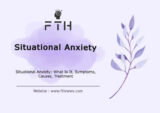
How to Get Out of Your Comfort Zone? In the journey of personal growth and success, one crucial step stands out: breaking free from the familiar, cozy confines of our comfort zone. Stepping into the unknown, embracing discomfort, and challenging ourselves is where true growth begins. If you’re ready to unleash your full potential, this guide is for you.
Understanding the Comfort Zone:
Before we embark on our journey to break free from the shackles of our comfort zone, it’s imperative to grasp its intricacies. The comfort zone isn’t merely a physical location; it’s a psychological state deeply ingrained within us. It’s the realm where activities and situations feel not only familiar but safe, predictable, and, dare I say, comfortable.
At its core, the comfort zone serves a vital purpose: it provides us with a sense of security and stability in an ever-changing world. It’s our refuge from the uncertainties and challenges that lurk beyond its boundaries. However, while the comfort zone offers temporary solace, it also acts as a double-edged sword.
While it shields us from discomfort and anxiety, it simultaneously stifles our growth and potential. It creates a bubble of complacency where we become content with mediocrity and resist any semblance of change. In this stagnant state, personal development takes a backseat, and our aspirations remain unfulfilled.
The paradox of the comfort zone lies in its deceptive allure. While it promises safety and familiarity, it fosters a sense of stagnation and complacency. It’s akin to a cozy cocoon that cocoons us from the harsh realities of the world, but in doing so, it inhibits our ability to spread our wings and soar to new heights.
Now that we’ve unraveled the intricacies of the comfort zone, we’re better equipped to embark on our journey of liberation. By understanding its allure and its limitations, we can begin to challenge its confines and embrace the discomfort that accompanies growth. It’s time to step boldly into the unknown, to embrace uncertainty, and to redefine our limits.
How to Get Out of Your Comfort Zone
1. Set Clear and Specific Goals:
Defining clear and specific goals is essential for breaking out of your comfort zone. Take the time to identify what you want to achieve outside your comfort zone, whether it’s learning a new language, starting a business, or traveling solo.
For example, if your goal is to learn a new language, specify which language you want to learn, why you want to learn it, and how proficient you aim to become. Clear goals provide direction, motivation, and a sense of purpose, making it easier to push past your comfort zone.
2. Break Goals into Manageable Steps:
After setting clear goals, break them down into smaller, more manageable steps. Instead of focusing on the end result, concentrate on the next actionable step you can take.
For instance, if your goal is to start a business, your first step might be researching your target market or drafting a business plan. Breaking goals into manageable steps helps prevent overwhelm and allows you to make progress incrementally. Each small achievement builds confidence and momentum, propelling you closer to your ultimate goal.
3. Visualize Success:
Visualization serves as a potent tool for breaking out of your comfort zone. Dedicate time each day to vividly imagine yourself successfully achieving your goals. Envision the emotions you’ll experience, visualize potential obstacles, and visualize yourself overcoming them with confidence and resilience. By mentally rehearsing success, you not only reinforce your commitment but also cultivate the mindset needed to tackle challenges head-on.
For instance, if your goal is to ace a job interview, visualize yourself confidently answering questions, impressing the interviewer, and ultimately landing the job. Imagine the feeling of accomplishment and pride as you walk out of the interview room knowing you gave it your best shot.
4. Embrace Discomfort:
Stepping outside your comfort zone invariably triggers discomfort, but rather than avoiding or resisting it, embrace these feelings as integral to your growth journey. Understand that discomfort is a natural byproduct of stretching beyond familiar boundaries and signifies progress. Instead of letting fear and discomfort hinder your progress, leverage them as catalysts for personal development. Use the adrenaline rush of discomfort as motivation to propel yourself toward your goals.
For example, if you’re apprehensive about public speaking, acknowledge the nerves, but channel them into enthusiasm and energy to deliver a compelling presentation. Visualize yourself standing confidently on stage, captivating your audience with your words, and feeling exhilarated by the experience of stepping outside your comfort zone.
5. Practice Self-Compassion:
Breaking out of your comfort zone can be daunting, and it’s crucial to be gentle with yourself throughout the process. Rather than succumbing to self-criticism or harsh judgment, cultivate self-compassion and extend the same kindness and understanding to yourself that you would offer to a dear friend facing a similar challenge. Embrace the reality that setbacks and mistakes are inevitable parts of growth and view them as opportunities for learning and refinement. Celebrate even the smallest victories along the way, acknowledging your progress and resilience.
For example, if you’re learning to play a musical instrument and find yourself struggling with a new technique, instead of berating yourself for not mastering it immediately, acknowledge your efforts and perseverance, recognizing that improvement takes time and patience.
6. Seek Support and Accountability:
Surround yourself with a supportive network of individuals who both encourage and challenge you to venture beyond your comfort zone. Share your goals and aspirations with trusted friends, family members, or mentors who can offer guidance, accountability, and unwavering encouragement along your journey. Engage in open dialogue about your fears, aspirations, and progress, and leverage their insights and encouragement to propel you forward. Having a support system in place not only provides a source of motivation and inspiration but also helps alleviate feelings of isolation and apprehension.
For instance, if you’re committed to adopting a healthier lifestyle, enlist the support of a workout buddy or join a fitness community where you can share your achievements, setbacks, and aspirations with like-minded individuals. The camaraderie and accountability fostered by your support network can make the process of stepping outside your comfort zone feel less daunting and more attainable.
7. Reflect and Adjust:
Regularly assess your progress on your journey outside your comfort zone and be willing to adapt your approach as necessary. Take time to honestly evaluate what’s working well and what isn’t, and don’t hesitate to make changes to your strategy. Remember that breaking out of your comfort zone is a continuous process of growth and learning, not a one-time event. Embrace the opportunity to evolve and refine your approach as you gain new insights and experiences along the way.
For example, if you’ve been trying to overcome a fear of public speaking by attending workshops and practicing in front of small groups but haven’t seen much improvement, consider seeking out additional resources or adjusting your practice techniques. By remaining flexible and open-minded, you’ll be better equipped to overcome obstacles and continue progressing toward your goals.
8. Challenge Negative Thoughts:
Fear and self-doubt often rear their heads when stepping outside your comfort zone. Combat these thoughts by challenging them with evidence of past successes and positive affirmations. Remind yourself of times when you’ve overcome obstacles and achieved your goals, reinforcing your belief in your abilities.
For example, if you’re nervous about giving a presentation at work, recall instances where you delivered successful presentations or received positive feedback on your communication skills. By challenging negative thoughts with tangible evidence, you can build confidence and courage to face new challenges head-on.
9. Celebrate Progress:
Every step taken outside your comfort zone is a victory worth celebrating. Whether it’s conquering a fear, mastering a new skill, or pushing past a mental barrier, acknowledge and celebrate every milestone, no matter how small. Recognizing your progress reinforces positive behavior and motivates further action. For instance, if you’ve been working on overcoming social anxiety and successfully attend a social gathering, treat yourself to a small reward or take time to reflect on your achievement. By celebrating your progress, you cultivate a sense of accomplishment and momentum to continue pushing beyond your comfort zone.
10. Embrace Optimism and Learning:
Adopting a positive mindset is essential for navigating the challenges of stepping outside your comfort zone. Embrace the belief that every experience, whether successful or not, is an opportunity for growth and learning. Cultivate a mindset of lifelong learning, continuously seeking out new experiences and expanding your horizons.
For example, if you’re hesitant to try a new hobby or skill, approach it with an open mind and a willingness to learn. Embracing optimism and a thirst for knowledge empowers you to face challenges with resilience and curiosity, propelling you toward personal growth and fulfillment.
11. Learn from Setbacks:
Failure is an inevitable part of any journey outside your comfort zone, but it’s also a valuable opportunity for growth and development. Instead of letting setbacks discourage you, view them as learning experiences that can propel you forward. Reflect on what went wrong, identify lessons learned, and use them to inform your future actions. For instance, if you encounter obstacles while pursuing a new career path, consider what skills or knowledge gaps contributed to the setback and take steps to address them. By embracing failure as a natural part of the learning process, you cultivate resilience and determination to persevere in the face of adversity.
12. Cultivate Resilience:
Building resilience is essential for navigating the challenges of stepping outside your comfort zone. Resilience allows you to bounce back from setbacks, adapt to new situations, and persevere in the face of adversity. To cultivate resilience, practice self-care and prioritize your well-being, both physically and emotionally. Engage in activities that help you recharge and manage stress, such as exercise, meditation, or spending time in nature. Additionally, cultivate a growth mindset by reframing setbacks as opportunities for learning and growth. Instead of dwelling on past failures, focus on how you can use them to become stronger and more resilient in the future. By building resilience, you’ll develop the inner strength and fortitude needed to push past your comfort zone and achieve your goals.
13. Step into Discomfort Regularly:
Make a conscious effort to regularly engage in activities or situations that challenge you and push you outside your comfort zone. This could involve trying new experiences, taking on unfamiliar tasks, or exposing yourself to situations that evoke discomfort or anxiety. By intentionally seeking out discomfort on a consistent basis, you gradually expand your comfort zone and build resilience to face future challenges with greater ease. Start with small steps and gradually increase the level of difficulty as you become more comfortable with stepping outside your comfort zone. Remember, growth often occurs outside of your comfort zone, so embrace discomfort as a pathway to personal development and growth.
The Benefits of Stepping Out of Your Comfort Zone:
Contrary to popular belief, discomfort isn’t merely a hurdle to overcome; it’s a powerful catalyst for personal growth and development. Embracing discomfort opens doors to a world of possibilities, offering a plethora of benefits that extend far beyond our comfort zone’s confines.
1. Accelerated Personal Growth:
Stepping outside our comfort zone thrusts us into unfamiliar territory, where we’re forced to adapt, learn, and grow. It’s in these moments of discomfort that we discover our true potential and unlock hidden talents and abilities. Each challenge we overcome propels us further along the path of personal growth, transforming us into stronger, more resilient individuals.
2. Expanded Perspective:
Comfort breeds complacency, while discomfort breeds curiosity. By venturing outside our comfort zone, we expose ourselves to new experiences, cultures, and viewpoints. This exposure broadens our perspective, challenging our preconceived notions and expanding our understanding of the world. It fosters empathy, tolerance, and appreciation for diversity, ultimately making us more compassionate and enlightened beings.
3. Enhanced Resilience:
In the face of discomfort and adversity, we discover our inner strength and resilience. By pushing past our perceived limits and overcoming challenges, we build mental fortitude and emotional resilience. We learn to embrace failure as a stepping stone to success and to persevere in the face of obstacles. This resilience serves us well not only in our personal endeavors but also in navigating life’s inevitable ups and downs with grace and resilience.
4. Innovation and Creativity:
Comfort stifles creativity, while discomfort fuels innovation. Stepping outside our comfort zone forces us to think outside the box, to explore new ideas, and to embrace unconventional approaches. It encourages risk-taking and experimentation, leading to breakthroughs and innovations that would have otherwise remained undiscovered. By challenging the status quo and embracing discomfort, we unleash our creative potential and drive meaningful change in the world.
5. Heightened Self-Confidence:
Each time we step outside our comfort zone and conquer our fears, we reaffirm our belief in ourselves and our abilities. This newfound self-confidence empowers us to take on even greater challenges and pursue our dreams with unwavering determination. As we accumulate victories and accomplishments outside our comfort zone, we develop a sense of self-assurance that permeates every aspect of our lives, from our careers to our relationships.
6. Increased Adaptability:
Stepping outside our comfort zone exposes us to new environments, challenges, and situations, forcing us to adapt and thrive in unfamiliar circumstances. This adaptability is a valuable skill in an ever-changing world, enabling us to navigate unforeseen challenges with agility and grace.
7. Strengthened Decision-Making Skills:
Embracing discomfort requires us to make tough decisions and take calculated risks. By repeatedly confronting uncertainty and adversity, we hone our decision-making skills and become more adept at weighing options, assessing risks, and taking decisive action. This newfound confidence in our decision-making abilities serves us well in both our personal and professional lives.
8. Heightened Emotional Intelligence:
Stepping outside our comfort zone often triggers a range of emotions, from fear and anxiety to excitement and exhilaration. By learning to manage and navigate these emotions effectively, we develop greater emotional intelligence. This heightened self-awareness and self-regulation enable us to connect more deeply with others, resolve conflicts constructively, and navigate complex social dynamics with ease.
9. Expanded Network and Opportunities:
Venturing outside our comfort zone exposes us to new people, ideas, and opportunities that we may not have encountered otherwise. By expanding our social and professional networks, we open doors to collaborations, mentorship, and career advancement. Each new connection brings with it the potential for growth and opportunity, propelling us further along the path to success.
10. Sense of Achievement and Fulfillment:
Perhaps the most rewarding aspect of stepping out of our comfort zone is the sense of achievement and fulfillment that accompanies overcoming challenges and achieving our goals. Each milestone we reach outside our comfort zone serves as a testament to our courage, resilience, and determination. It imbues us with a profound sense of satisfaction and pride, fueling our motivation to continue pushing the boundaries of what we thought possible.
Are Comfort Zones Dead Zones?
While comfort zones are often associated with feelings of safety and familiarity, they’re not necessarily “dead zones.” Instead, comfort zones can be seen as areas where individuals feel most at ease and where routine tasks are performed with minimal stress or anxiety. However, remaining exclusively within the comfort zone for extended periods can lead to stagnation and missed opportunities for growth and development.
Comfort zones become problematic when individuals become complacent and resistant to change or challenge. In such cases, the comfort zone can act as a barrier to progress and personal fulfillment. It may prevent individuals from taking risks, pursuing new experiences, or realizing their full potential.
That said, comfort zones aren’t inherently negative. They serve important functions in providing a sense of security and stability, especially during times of uncertainty or stress. Additionally, comfort zones can be a valuable retreat for relaxation and rejuvenation.
The key is to strike a balance between comfort and discomfort—to recognize when the comfort zone becomes restrictive and to actively seek opportunities for growth and expansion outside of it. By pushing beyond the boundaries of the comfort zone, individuals can discover new strengths, capabilities, and possibilities that may have otherwise remained undiscovered. Therefore, rather than viewing comfort zones as “dead zones,” it’s more accurate to see them as starting points for personal exploration and growth.
Examples of Comfort Zones:
- Daily Routine: Engaging in familiar activities and routines, such as waking up at the same time, following a set morning routine, and sticking to regular work or school schedules.
- Social Circle: Surrounding oneself with familiar friends, family members, or colleagues and avoiding interactions with new people or unfamiliar social situations.
- Job Stability: Remaining in a comfortable job or career path without seeking new opportunities for advancement or professional development.
- Hobbies and Interests: Sticking to familiar hobbies and activities that require minimal effort or challenge, rather than exploring new interests or pursuing personal passions.
- Physical Environment: Preferring to stay within familiar surroundings, such as home or a familiar neighborhood, and avoiding travel or exploration of new places.
- Comfortable Relationships: Maintaining relationships that feel safe and familiar, even if they may not be fulfilling or aligned with personal growth goals.
- Avoidance of Risk: Resisting taking risks or trying new experiences due to fear of failure, rejection, or uncertainty.
- Limited Perspectives: Holding onto fixed beliefs or viewpoints and avoiding exposure to new ideas, perspectives, or ways of thinking.
Is it OK to Stay in the Comfort Zone?
Staying in the comfort zone is not inherently negative, as it provides a sense of security, familiarity, and stability. It can be a valuable refuge during times of stress or uncertainty, offering a space where individuals feel at ease and in control. However, there are important considerations to keep in mind:
- Limited Growth: Remaining exclusively within the comfort zone for extended periods may lead to stagnation and missed opportunities for personal and professional growth. Growth often occurs outside of the comfort zone, where individuals are challenged to learn, adapt, and expand their capabilities.
- Fear of Change: Fear of the unknown or fear of failure can keep individuals trapped within their comfort zones, preventing them from taking risks or pursuing new opportunities. While staying within the comfort zone may feel safe, it can also inhibit progress and limit potential achievements.
- Lack of Fulfillment: Over time, staying within the comfort zone may result in a sense of complacency or unfulfillment. Individuals may find themselves longing for greater challenges, meaningful experiences, or opportunities for self-discovery that lie beyond the boundaries of their comfort zone.
- Missed Opportunities: By avoiding risks or staying within familiar boundaries, individuals may miss out on valuable opportunities for learning, growth, and personal development. Stepping outside the comfort zone can lead to new experiences, connections, and insights that enrich life and expand horizons.
Ultimately, the decision to stay within or step outside the comfort zone depends on individual preferences, goals, and circumstances. While there are benefits to both approaches, finding a balance between comfort and discomfort is key. Embracing occasional challenges and pushing beyond the boundaries of the comfort zone can lead to greater resilience, confidence, and fulfillment in the long run.
Benefits of Staying in the Comfort Zone:
- Sense of Security: Remaining within the comfort zone provides a sense of security and familiarity, reducing feelings of stress or anxiety associated with unfamiliar situations.
- Minimized Risk: Staying within familiar boundaries can help mitigate risks associated with venturing into unknown territory, such as potential failure or rejection.
- Conservation of Energy: Engaging in familiar activities or routines within the comfort zone requires less mental and emotional energy compared to facing new challenges or uncertainties.
- Preservation of Resources: By avoiding unnecessary risks or challenges, individuals can conserve resources such as time, effort, and money that may be required to navigate unfamiliar situations.
- Maintenance of Stability: Remaining within the comfort zone can help maintain stability in various aspects of life, including relationships, career, and personal well-being, reducing the likelihood of disruption or upheaval.
- Enhanced Relaxation: Familiar environments and activities within the comfort zone can promote relaxation and reduce feelings of tension or stress, contributing to overall well-being.
- Optimized Performance: For tasks or activities where individuals have developed expertise or proficiency within their comfort zone, staying within familiar boundaries can lead to optimized performance and efficiency.
- Recharge and Rejuvenation: The comfort zone can serve as a retreat for rest, relaxation, and rejuvenation, providing individuals with an opportunity to recharge before facing new challenges.
While staying within the comfort zone offers these benefits, it’s important to recognize that excessive reliance on familiarity and routine may limit opportunities for growth, learning, and personal development. Finding a balance between comfort and discomfort is essential for achieving long-term fulfillment and success.
Reasons Why You May Get Stuck in Your Comfort Zone:
Fear of Failure:
One of the most common reasons for staying within the comfort zone is the fear of failure. You may worry that stepping outside your familiar boundaries will result in mistakes, setbacks, or embarrassment, leading you to avoid taking risks.
Fear of Uncertainty:
Stepping into the unknown can be daunting, as it often involves uncertainty and unpredictability. You may prefer the stability and predictability of your comfort zone, even if it means missing out on potential opportunities for growth.
Lack of Confidence:
Low self-confidence or self-esteem can contribute to staying within the comfort zone. You may doubt your abilities to succeed outside of familiar territory, leading you to stick to what feels safe and familiar.
Comfort and Familiarity:
The comfort zone provides a sense of security and familiarity that can be difficult to let go of. You may feel reluctant to venture into unfamiliar territory, preferring the safety and stability of familiar routines and environments.
Negative Past Experiences:
Previous experiences of failure, rejection, or criticism can create a fear of repeating past mistakes. You may avoid stepping outside your comfort zone to protect yourself from potential pain or disappointment.
Lack of Motivation:
A lack of clear goals or motivation can keep you stuck in your comfort zone. Without a strong sense of purpose or direction, you may feel content to stay within familiar boundaries and avoid the discomfort of change or challenge.
External Pressures:
External factors such as societal expectations, peer pressure, or family dynamics can influence your decision to stay within the comfort zone. You may feel pressure to conform to others’ expectations or maintain the status quo, even if it conflicts with your personal goals or aspirations.
Habitual Behavior:
Over time, staying within the comfort zone can become a habituated pattern of behavior. You may default to familiar routines and environments without consciously considering the potential benefits of stepping outside your comfort zone.
Recognizing these factors can help you understand why you may be getting stuck in your comfort zone and empower you to take steps towards breaking free and embracing new challenges and opportunities for growth.
Conclusion:
Breaking out of your comfort zone is not for the faint of heart—it requires courage, determination, and a willingness to embrace discomfort. However, by setting clear goals, breaking them down into manageable steps, and seeking support and accountability, you can overcome your fears and unlock your full potential. Remember that the journey outside your comfort zone is a transformative one, filled with opportunities for growth and self-discovery. So, dare to step boldly into the unknown, for it’s where true growth and transformation await.













